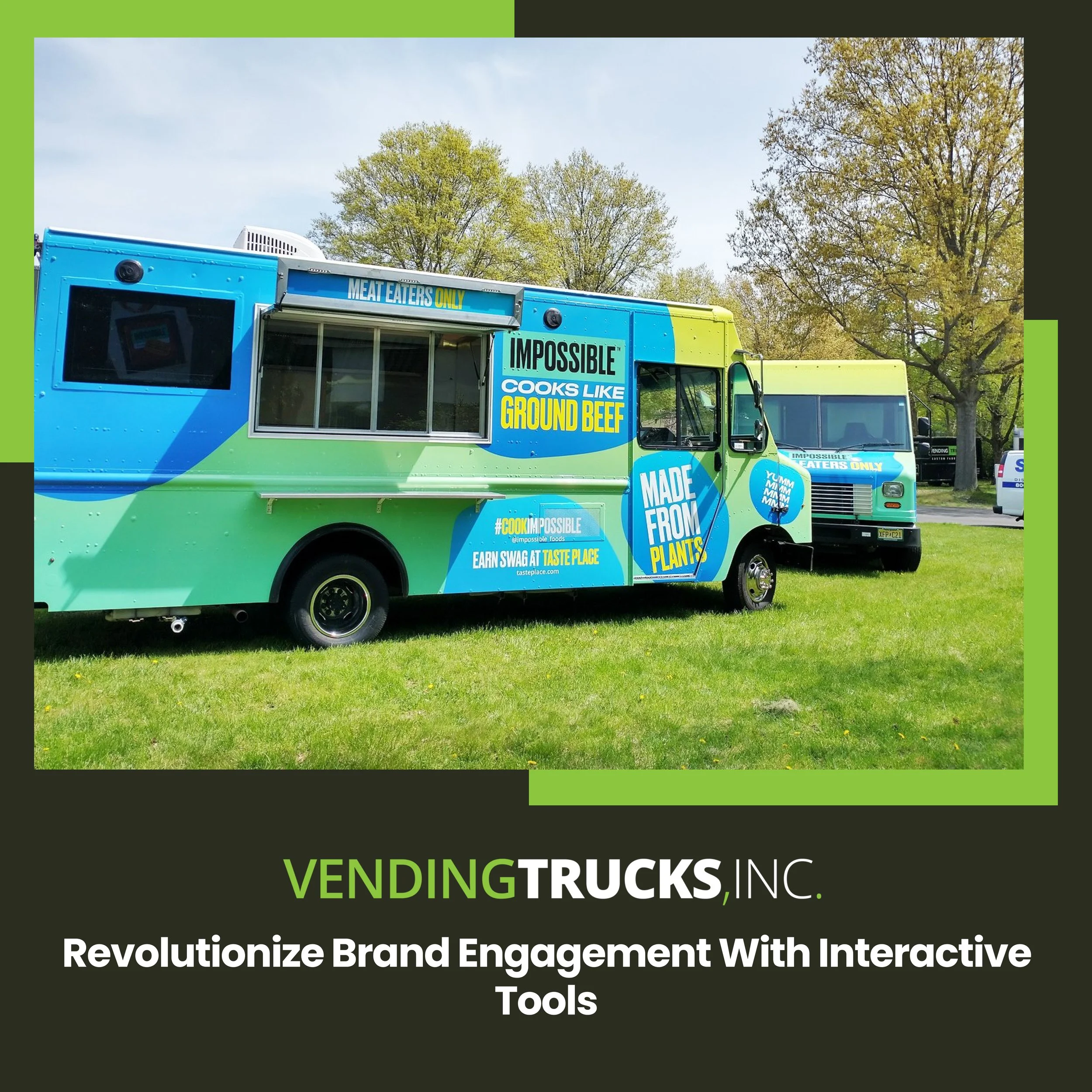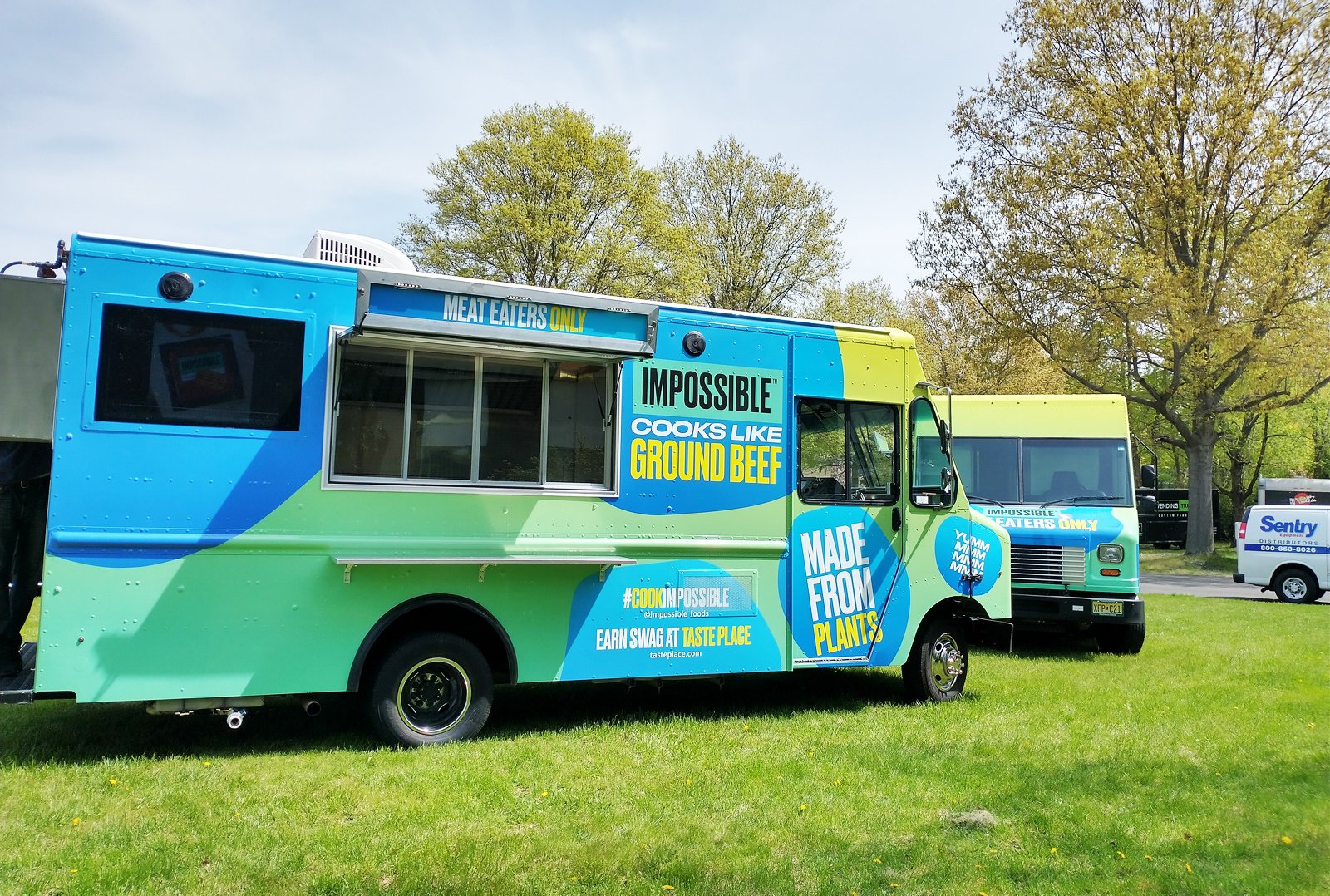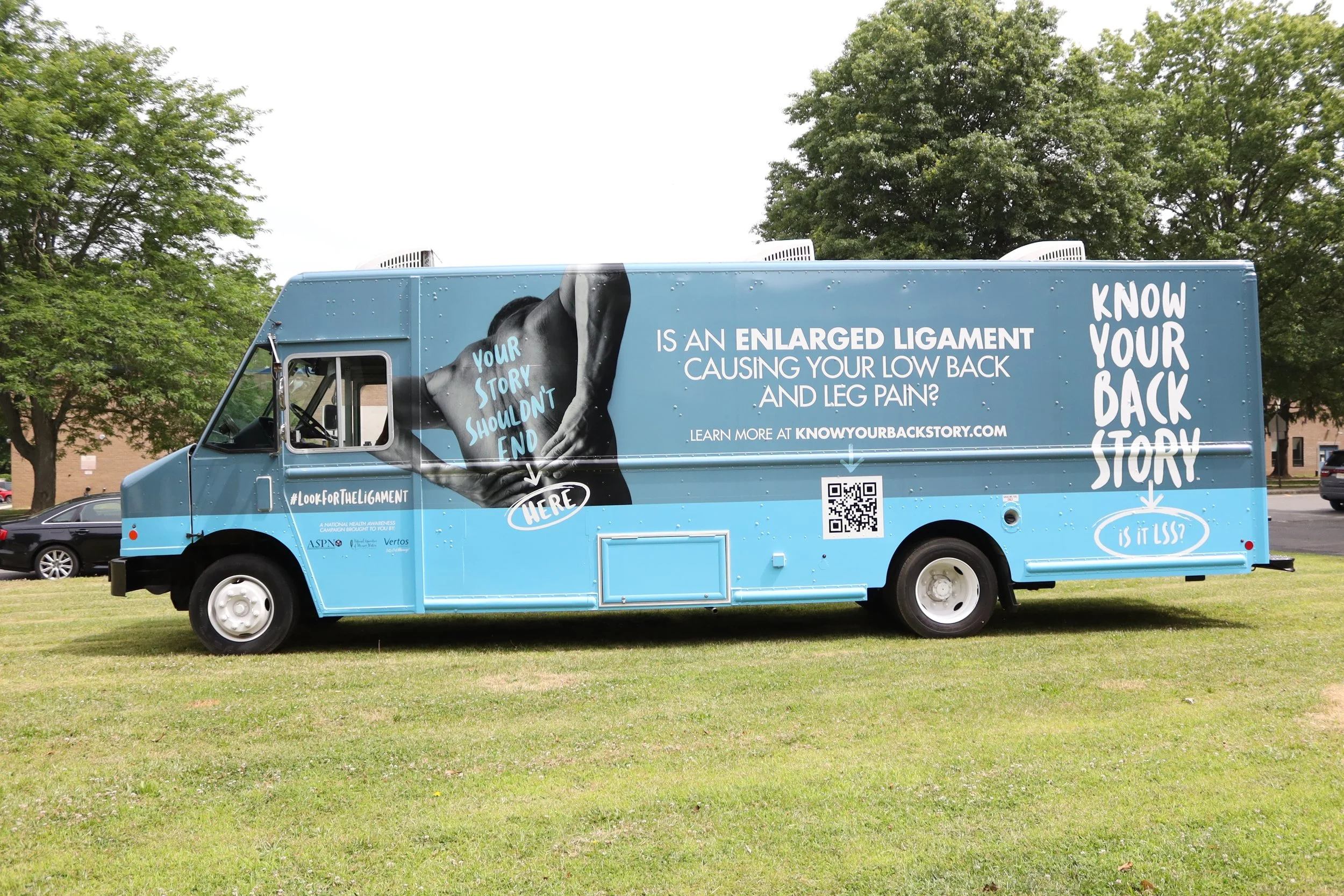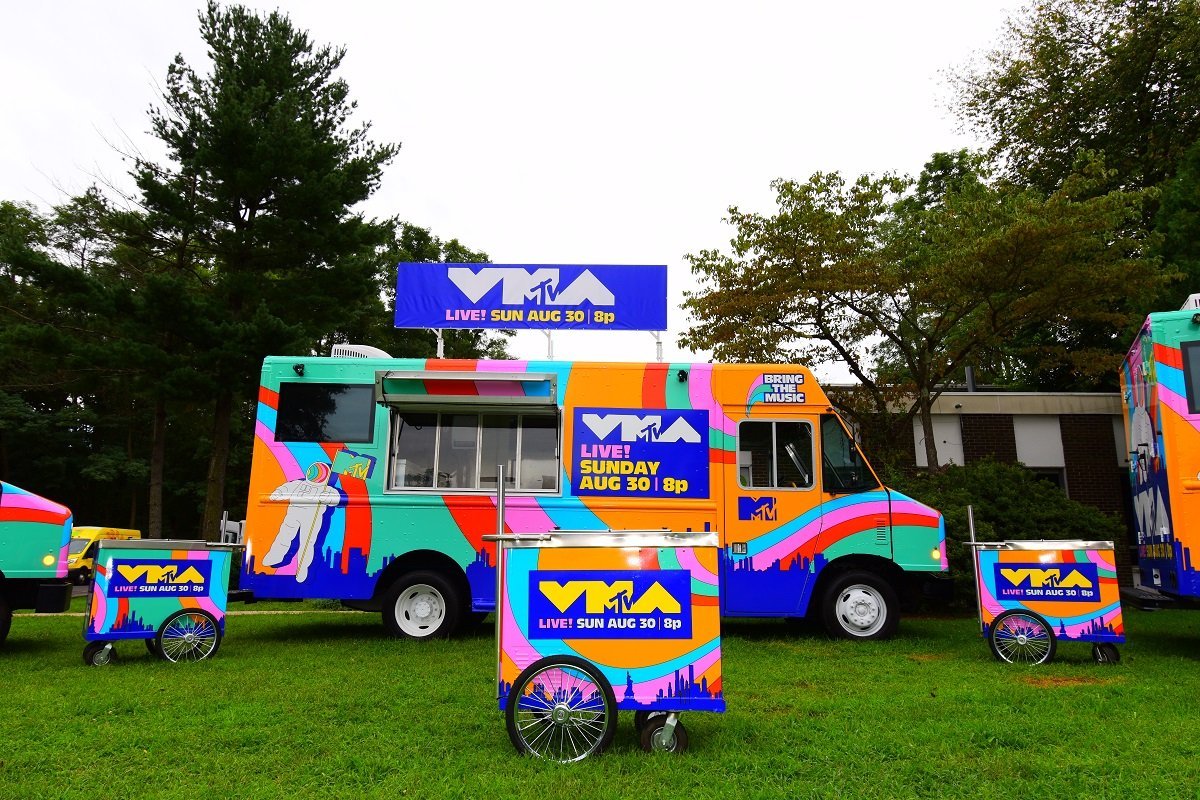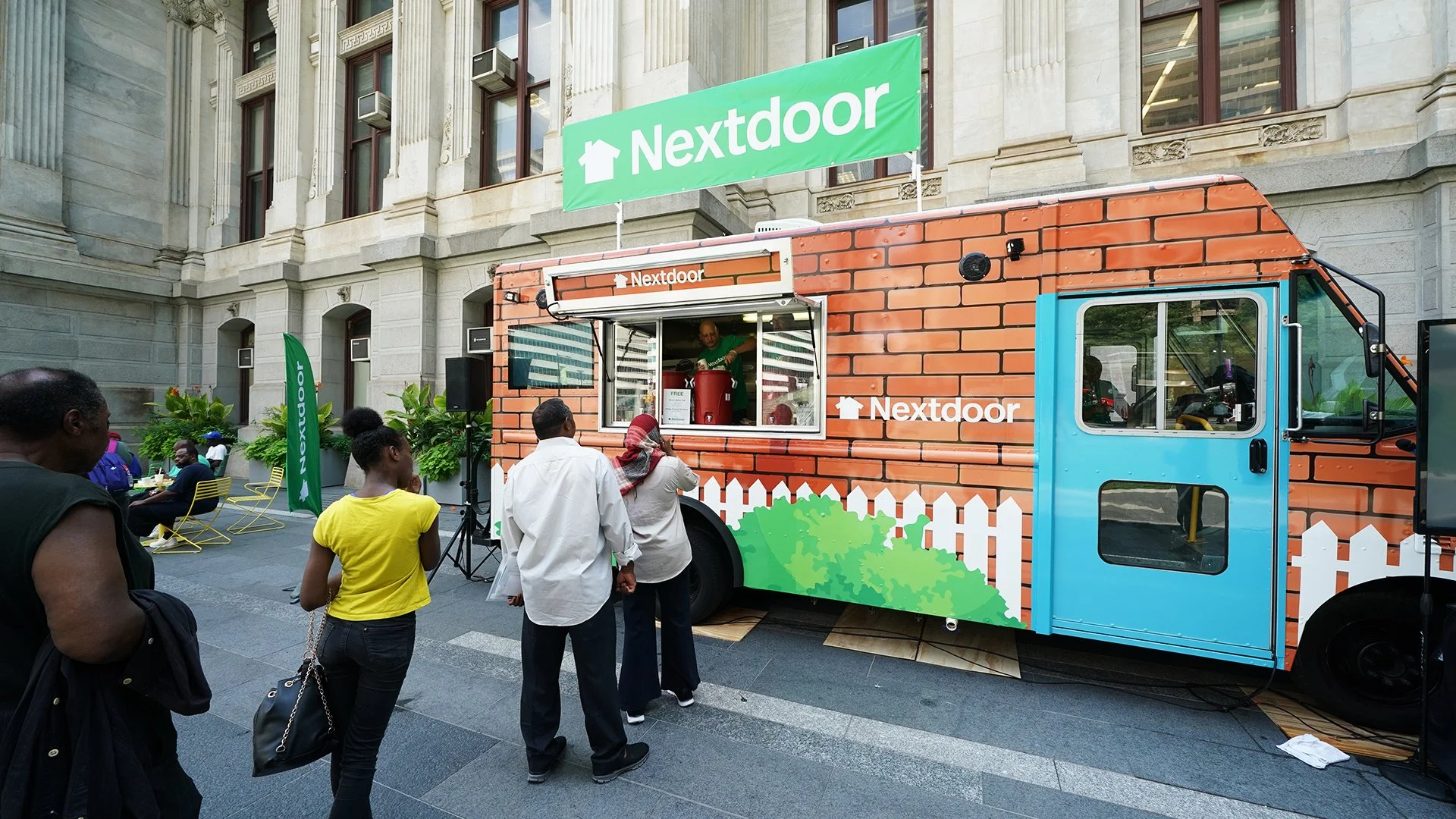Revolutionize Brand Engagement with Interactive Tools
Interactive tools for brand engagement are changing how businesses connect with customers. These tools help create lasting impressions and build brand loyalty. Companies can now interact with their audience in more personal and immersive ways. Let's look at some of the best interactive tools that are making a big impact in brand marketing and changing how businesses engage with consumers.
Key Takeaways
| Tool | Benefits | Best For |
|---|---|---|
| Mobile Marketing Vehicles | Bring brand directly to customers, create memorable experiences | Food & beverage, retail, product launches |
| Glass Box Trucks | Showcase products/services in action, attract attention | Technology demos, live events, product displays |
| Mobile Salons | Offer personalized experiences, build customer relationships | Beauty, wellness, personal care brands |
| Digital Tools | Enhance engagement, collect data, create interactive experiences | All industries, especially tech-savvy brands |
| Immersive Installations | Create unforgettable brand experiences, increase brand recall | Entertainment, lifestyle, experiential marketing |
Mobile Marketing Vehicles: Taking Your Brand on the Road
Mobile marketing vehicles are like traveling billboards that can go wherever your customers are. They bring your brand directly to people in an exciting way. Food trucks are a great example, but this idea works for many types of businesses. These dynamic setups let you meet customers where they are, whether that's at festivals, business districts, or community events.
These vehicles can be designed to match your brand's look and feel perfectly. This makes your brand stand out wherever the truck goes, turning heads and sparking conversations. People can see, touch, and even taste what your brand is about, creating a full experience that they'll remember. The best part is these vehicles can go to specific places to reach the right people, which can be more effective than regular advertising.
What makes mobile marketing vehicles so powerful is their flexibility. You can update your promotions, test different markets, and respond to trends quickly. Plus, they create a sense of excitement and urgency – when people see your branded vehicle rolling into their neighborhood, they know it's a special opportunity to connect with your brand. Whether you're sampling products, hosting interactive games, or offering exclusive deals, these mobile setups turn ordinary marketing into memorable experiences.
Glass Box Trucks: Showing Off Your Brand
Glass box trucks are another cool tool for brand engagement. These trucks have clear sides so people can see what's happening inside. It's like a moving display case that can grab attention wherever it goes. The transparency creates instant curiosity, drawing crowds who want to peek inside and see what your brand is all about.
With glass box trucks, you can set up displays or demonstrations that show your products or services in action. People can see your brand come to life through live demonstrations, product showcases, or interactive experiences. These trucks are perfect for busy areas, festivals, or special events where visibility is key. The see-through design naturally encourages people to take photos and share them on social media, which helps spread the word about your brand even more.
What makes glass box trucks really special is their ability to turn your marketing into live entertainment. Whether you're featuring a chef preparing samples, an artist creating custom pieces, or tech demos of your latest products, the transparent walls let everyone be part of the show. This openness builds trust with customers – they can see exactly what you're offering with no hidden tricks. Plus, the unique look of these vehicles makes them impossible to ignore, creating memorable moments that stick with people long after they've walked by.
Mobile Salons: Personal Brand Experiences
Mobile salons are becoming popular for brands that want to offer personal experiences to their customers. These are like mini-stores or service centers on wheels that bring your brand's products or services directly to people. Unlike traditional retail spaces, mobile salons create intimate settings where customers can truly connect with your brand. They offer the perfect blend of convenience and exclusivity that today's consumers love.
In a mobile salon, customers can have one-on-one time with your brand in a comfortable, private space. This is great for personal consultations, trying products, or special services that need a more focused environment. For example, beauty brands can do makeup tutorials or skincare treatments, while tech companies might offer personalized device setups or training. These personal experiences help create strong emotional connections between customers and your brand, turning casual browsers into loyal fans.
What sets mobile salons apart is their ability to deliver premium experiences anywhere. The controlled environment lets you create the perfect atmosphere with custom lighting, music, and decor that matches your brand identity. This setup allows for deep conversations about products and getting valuable feedback in real-time. The special nature of these mobile experiences can make people excited to engage with your brand when they get the chance – it's like bringing a VIP experience to their neighborhood. Plus, the appointment-style visits often create a sense of exclusivity that makes customers feel special and valued.
Digital Tools: Connecting Online and Offline
To make these mobile experiences even better, companies are using various digital tools.
Some popular digital tools that are changing brand engagement include:
- Social media integration for real-time updates and customer interaction
- QR codes on trucks and menus for easy access to digital information
- Augmented reality experiences to showcase menu items or products virtually
- Interactive touchscreens for self-service ordering or product exploration
- Mobile apps with loyalty programs to encourage repeat customers
- GPS tracking to help customers locate mobile brand experiences
- Online ordering and payment systems for convenience
- Digital menu boards for dynamic content updates
- Customer feedback platforms to improve service and products
- Email marketing for promotions and event announcements
These digital tools help brands collect valuable data on what customers like, engage with them across different platforms, and create fun, interactive experiences that people remember. By using these technologies in mobile marketing, brands can create a more complete and engaging customer journey that smoothly blends physical and digital interactions.
Real-World Success: Shake Shack's Mobile Engagement
Let's look at how a real brand successfully used these tools to grow their business.
Shake Shack used food trucks to bring their burgers to new places and events, helping them reach more people beyond their regular restaurants. They made their trucks look just like their restaurants, so people would recognize them right away. They used social media to tell people where the trucks would be and what special items they had, which made people excited to visit. They also used digital ordering systems on their trucks, which made service faster and helped them collect information about what people liked. This mix of food trucks and digital tools helped Shake Shack become more well-known, engage with more customers, and sell more in areas where the food trucks went. It showed that Shake Shack was an innovative company that cared about its customers.
Creating Memorable Brand Experiences
Immersive installations can include things like:
- Virtual reality (VR) technology to transport people to new places related to your brand
- Augmented reality (AR) features that add digital information to the real world
- Interactive games or challenges that teach people about your brand or products in a fun way
- Themed photo booths that encourage people to share on social media
- Hands-on activities that let customers interact directly with your products or services
- Experiences that engage multiple senses, like smell or touch
- Live performances or demonstrations that show what your brand is good at
- Customizable elements that let visitors make the experience their own
These experiences are designed to leave a strong impression on people, creating emotional connections that last longer than regular advertising. By getting customers involved in active, participatory experiences, brands can make themselves more memorable, create positive feelings, and get people talking about them to others.
Custom Vehicles: Tailored Brand Engagement
For brands that want to create truly unique mobile experiences,
Custom vehicles can be designed to do anything a brand needs. For example, a brand might create a truck that turns into a stage for live shows or product demonstrations. Another might make a van with cool technology to offer virtual reality experiences about their products. Some brands have even made mobile museums or art galleries to show their history or creative ideas. The best thing about custom vehicles is that they're unique and can make a brand stand out from others. These vehicles become powerful marketing tools, getting attention wherever they go and providing a platform for brand experiences that can't be copied through regular marketing.
Pop-Up Stores: Short-Term, Big Impact
Another exciting tool for brand engagement is the pop-up store.
Pop-up stores can be set up in busy areas, at big events, or in places where a brand's target customers are. They give brands a chance to create short-term but powerful brand experiences that people remember. Pop-up stores can be used for many things, like launching new products, testing how people like new ideas, creating buzz about a brand, or just offering a new way for customers to interact with products. Because pop-ups are only there for a short time, they can make people feel like they need to visit soon or they'll miss out. This can drive more foot traffic and social media sharing. Pop-up stores also let brands try out new retail ideas or product lines without committing to a permanent store. They can include interactive elements, personalized experiences, and Instagram-worthy setups that encourage people to share their experience on social media. By combining the excitement of a limited-time event with a physical store, pop-up stores are a powerful way for brands to engage customers and create memorable experiences that last long after the store has closed.
Best Practices for Interactive Brand Engagement
To make the most of these interactive tools and create truly impactful brand experiences, keep these best practices in mind:
- Know Your Audience: Research and understand your target demographic to choose tools and create experiences that will resonate with them.
- Be Consistent: Ensure that all brand elements, messaging, and experiences are consistent across different interactive tools and platforms.
- Collect Feedback: Use these interactions as opportunities to gather valuable insights about your customers' preferences and behaviors.
- Stay Flexible: Be prepared to adapt your approach based on real-time feedback and changing market conditions.
- Integrate Digital and Physical: Create seamless experiences that blend online and offline elements for a cohesive brand journey.
- Focus on Quality: Prioritize high-quality experiences over quantity to leave a lasting positive impression.
- Encourage Social Sharing: Design experiences that are inherently shareable to extend your reach through user-generated content.
- Measure and Analyze: Set clear KPIs and regularly analyze the performance of your interactive marketing efforts to optimize future strategies.
Conclusion: The Future of Brand Engagement
Interactive tools are changing how brands connect with customers, offering exciting new ways to make your brand stand out. From mobile marketing vehicles that bring your brand to consumers, to immersive digital experiences that transport customers into your brand's world, these tools provide great opportunities for creating memorable brand interactions.
By using a mix of physical and digital engagement strategies, brands can create multi-dimensional experiences that connect with customers on a deeper level. These experiences not only grab attention but also create emotional connections, encourage brand loyalty, and get people talking about your brand.
Remember, the key to successful brand engagement is to be creative, authentic, and always focused on giving value to your customers. Whether it's through a custom-designed vehicle that turns heads on the street, a pop-up store that creates buzz, or an AR experience that brings your products to life, the goal is to create moments that customers will remember and want to share.
As technology keeps evolving, we can expect even more glass box trucks and exciting tools for brand engagement to appear. Virtual and augmented reality, artificial intelligence, and the Internet of Things (IoT) will likely play bigger roles in how brands interact with consumers. The brands that stay open to new ideas, keep trying new technologies, and remain committed to creating meaningful customer experiences will be the ones that succeed in this changing marketing landscape.
In the end, the future of brand engagement is about creating seamless, personalized, and immersive experiences that blend the physical and digital worlds. By embracing these interactive tools and staying aware of changing consumer preferences, brands can build stronger, longer-lasting relationships with their customers, driving loyalty and growth in a competitive market.


